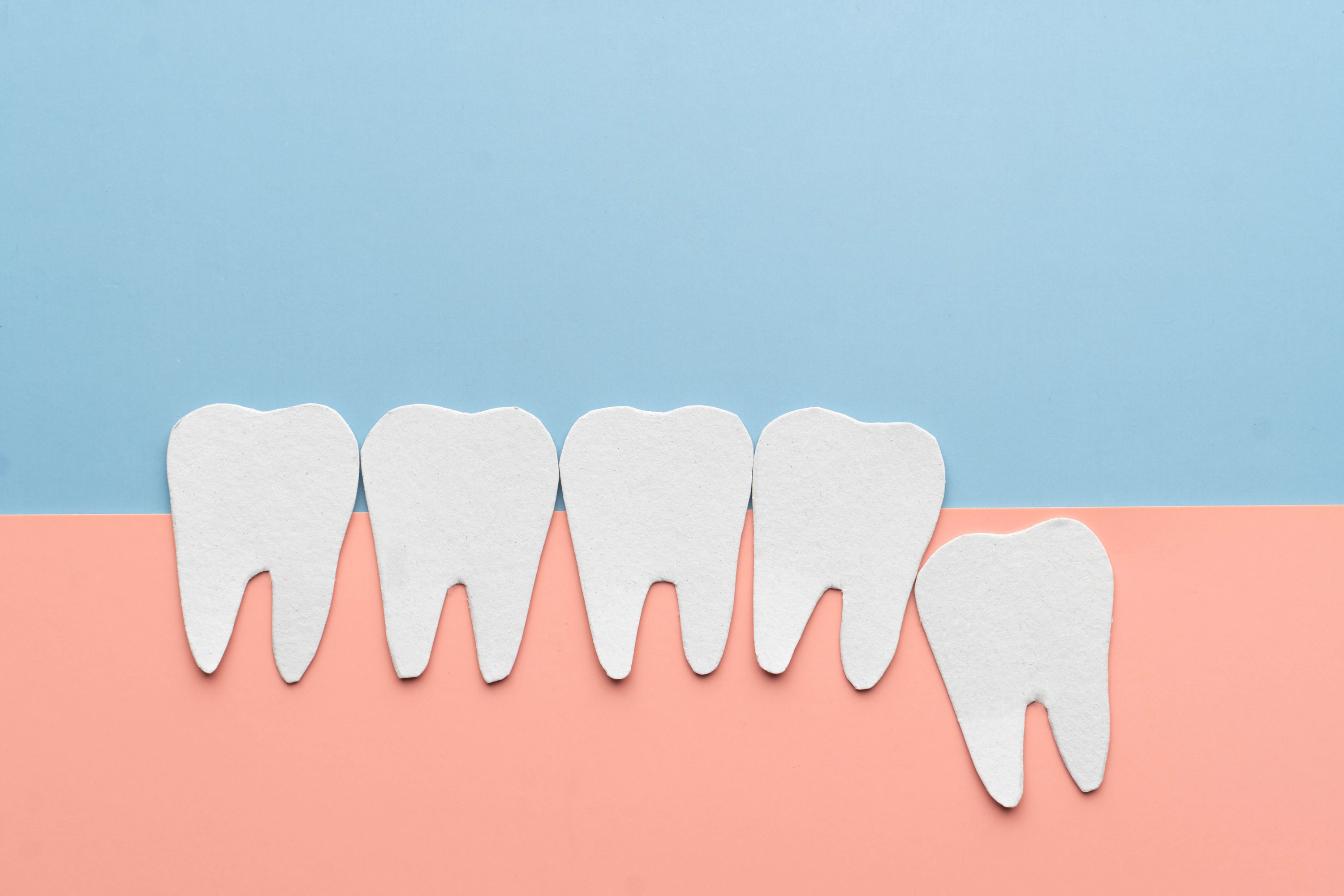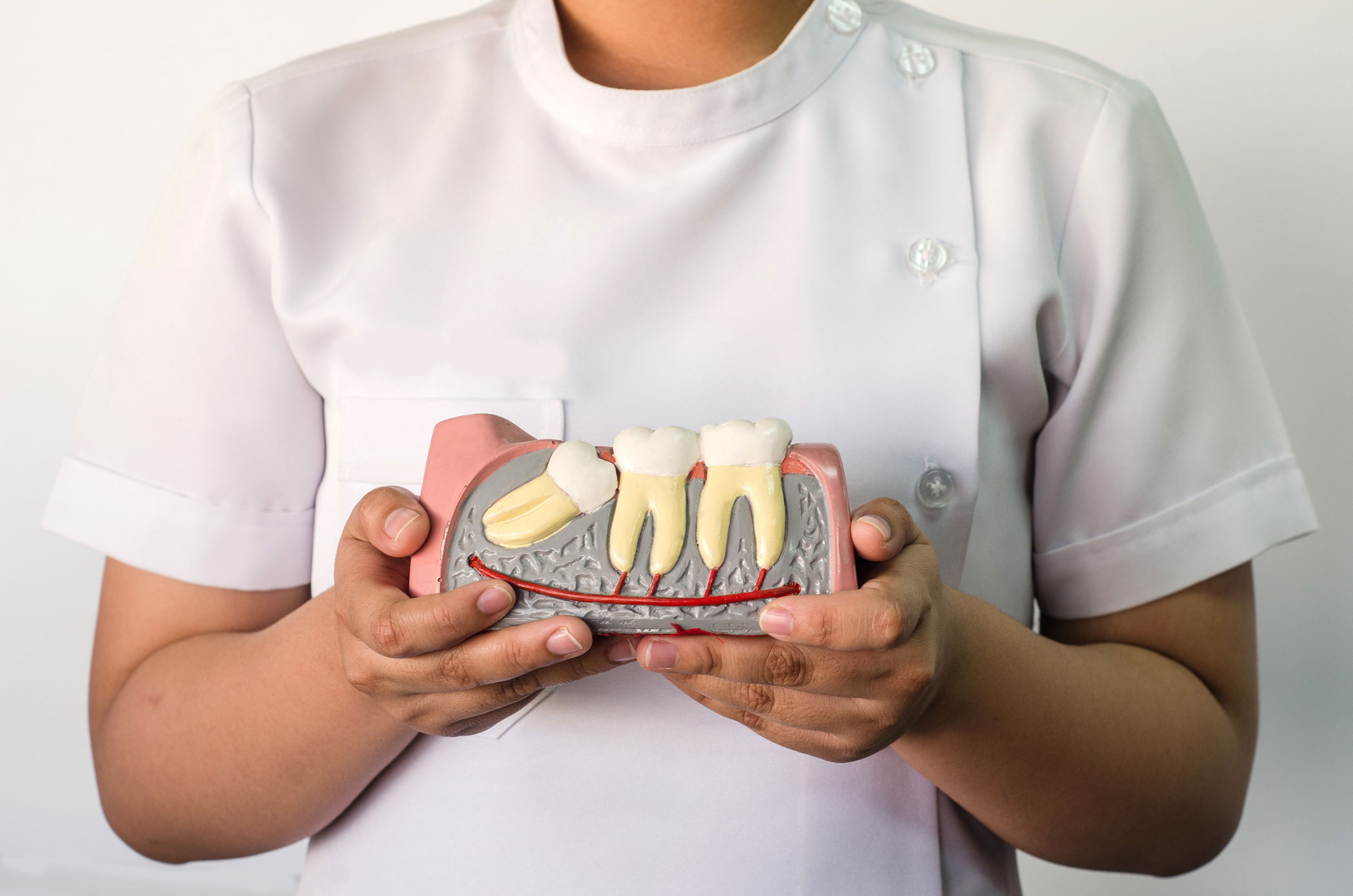After the permanent teeth completely settle into the jaw structure and complete their development, there is very little space for the wisdom teeth to emerge. For this reason, wisdom teeth may not come out of the gums because there is not enough space. In this case, wisdom teeth may remain impacted. However, not only wisdom teeth remain impacted. Which teeth will be impacted varies from person to person. However, impacted teeth problem is often seen in wisdom teeth.
What is an Impacted Teeth?
Embedded tooth is called teeth that have not erupted in the mouth where they should have come out despite the time passed. While all of the teeth may remain in the jawbone, they may actually be in the right place and not be visible because there is only soft tissue on them. A tooth where some of the teeth are visible in the mouth and the rest is under the gum is called a semi-impacted teeth.

Why Do Teeth Remain Impacted?
There are many factors that affect the impact of teeth. Sometimes one of these reasons, sometimes more than one, can be effective at the same time. Causes of embedded tooth include factors such as:
- Genetic factors,
- Neighboring teeth are displaced, closing the front of the tooth,
- Lack of space in the mouth due to stenosis of the jaw,
- The infection (inflammation) that occurs under the untreated caries of the deciduous teeth on the erupting teeth, affecting the eruption.
Which Teeth Remain More Impacted?
Which tooth will remain impacted varies from person to person. However, lower wisdom teeth, upper wisdom teeth and third incisors are the most embedded tooth.
What Are the Symptoms of Impacted Tooth?
Impacted teeth symptoms can occur in different ways. The symptoms are as follows:
- Redness or swelling in the gums of the teeth adjacent to the wisdom teeth located on the back
- Swelling on the chin and face
- Jaw pain
- Sensitization and bleeding in the gums
- Strain during mouth or jaw movements
- Bad breath of unknown cause
- Metallic or bitter taste in the mouth
When and In Which Situations Should Embedded Tooth Be Extracted?
Situations that require the extraction of embedded tooth are as follows:
- Semi-impacted wisdom teeth cause bad odor in the mouth because they cannot be cleaned completely. In addition, it should definitely be withdrawn as it will cause many negative conditions such as pain, swelling, swelling in the lymph nodes, limitation of mouth opening due to food residues and plaques accumulating around it.
- Fully impacted wisdom tooth may compress and damage the adjacent second molars, and cysts may form around some of them. In these cases, the impacted teeth must be extracted.
- In case the teeth need to be moved completely backwards during orthodontic treatment, impacted / semi-impacted wisdom tooth must be extracted.
Impacted Teeth Surgery and Treatment Process
If embedded tooth are in an area that will affect the patient's nutritional functions or if they are in a situation that will adversely affect dental and facial aesthetics, they should be evaluated and treated from an orthodontic point of view. Thus, the problems related to embedded tooth will be eliminated, as well as aesthetic concerns.
In the operations of embedded tooth, the area where the tooth is located is anesthetized with local anesthesia. Afterwards, the bone around the tooth is removed and the tooth is extracted. After tooth extraction, the treatment process of the wound is started by suturing. After approximately one week to 10 days, the sutures are removed and the treatment is terminated.
Impacted teeth surgery is not a difficult treatment. In addition, there is no pain or feeling of pain during the treatment. Mild pain that occurs after the effect of anesthesia wears off is easily relieved by painkillers. If the surgeon performing the surgery deems it necessary, postoperative painkillers and antibiotic treatment are recommended.
